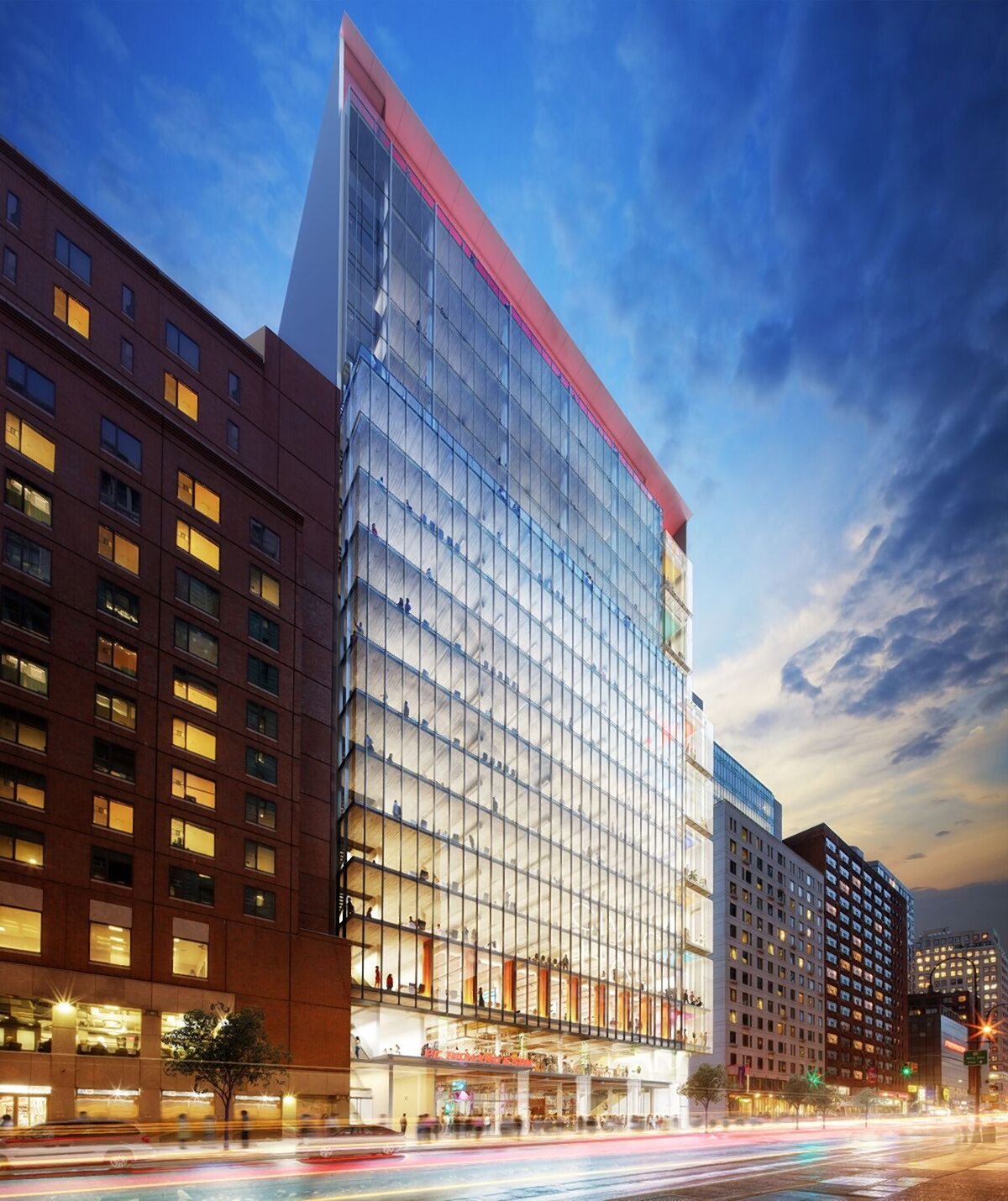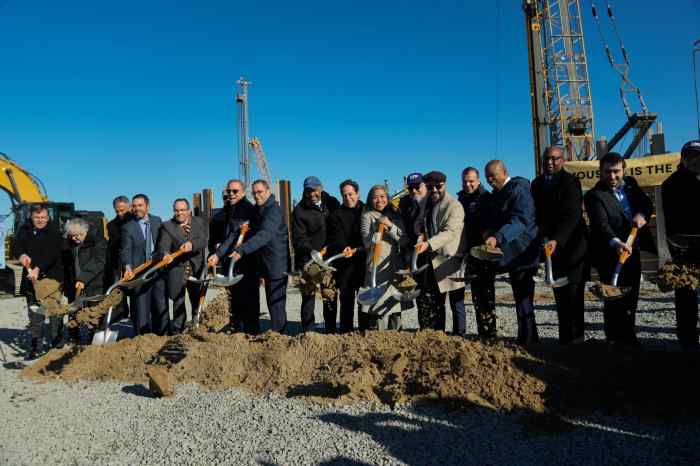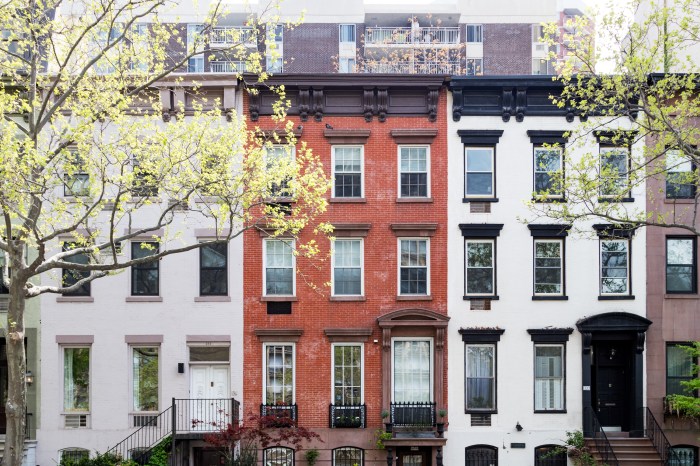
BY ANDREW BERMAN | To great fanfare, Mayor Bill de Blasio recently announced plans for a slick new “tech hub” to be built on E. 14th St. just east of Fourth Ave., on the current site of a P.C. Richard store. Sandwiched between two high-rise New York University dorms, the new building would tower over its neighbors and form the lynchpin of a new “Silicon Alley” the mayor hopes to develop between Union Square and Astor Place.
Whatever the virtues of the proposed center in terms of jobs and job training (which the mayor has gleefully touted), there are some daunting downsides to the project that are being swept under the rug. Unaddressed, these issues could accelerate troubling trends in the surrounding neighborhood, and cause the administration to miss a critical opportunity to provide what the mayor claims is his top priority — affordable housing.
The P.C. Richard site was zoned several years ago to encourage residential rather than commercial development, and was supposed to be developed at a much more modest scale than the mayor proposes. Additionally, the local community board — Community Board 3 — and elected officials’ number one stated priority for the site was affordable housing. Thus, by seeking to increase the allowable size and height of development, pursue commercial rather than residential construction, and exclude affordable housing, the mayor’s plan flies in the face of prior planning and community wishes for the site.
But that’s true of more than just this one site. We’re seeing the same trend of oversized, largely commercial and affordable-housing-free development all along the blocks from the P.C. Richard site down to Astor Place, between Third Ave. and University Place.
The examples are numerous. At 110 University Place, a nearly 300-foot-tall condo tower is replacing Bowlmor Lanes. A 232-foot-tall commercial and residential building is under construction at 809 Broadway, north of 11th St. Plans have just been filed for a 300-foot-tall office tower at 827-831 Broadway / 47 E. 12th St. And at 80 E. 11th St. / 799 Broadway, according to press reports, plans are being considered for a “Death Star II” — an office building that would replicate the black-glass office tower at 51 Astor Place, so nicknamed for its “Star Wars”-like aesthetic. This last project could easily match or exceed the size of these other neighboring ones in the pipeline.
Further east we are seeing the same trend. Mayor de Blasio’s campaign donor and political ally David Lichtenstein is developing a large hotel geared toward party-hopping millennials at 112 E. 11th St., across from Webster Hall. (Perhaps coincidentally, Lichtenstein also serves on the board of the city’s Economic Development Corporation, the agency behind the “tech hub” plan for the P.C. Richard site. The tech hub developer, RAL Development, has also been a major donor to the mayor.) This hotel will replace dozens of units of housing, much of it previously affordable.
On the southeast corner of Fourth Ave. and 10th St., work has begun on a 12-story tower which has at various times been planned as a hotel and residences. And of course the 12-story Hyatt Hotel was built at Fourth Ave. and 13th St. just a few years ago.
That’s a lot of very large development, most of it commercial, in just a dozen or so blocks. And the pace is clearly accelerating, perhaps partly in response to the mayor’s announcement of the tech hub plan. Moving ahead with construction on that project will only hasten this trend.
This does not have to be the case. If the mayor is going to rezone the P.C. Richard site for larger commercial development and ignore affordable housing needs, he can offset that by helping to protect the scale and largely residential character of the blocks to the south, and encourage the creation of affordable housing. So far, though, he has resisted doing so.
More than two years ago, the Greenwich Village Society for Historic Preservation proposed a “contextual” rezoning of the University Place and Broadway corridors to protect the scale of the area, reinforce its residential character, and encourage the inclusion of affordable housing in new developments. The plan has been endorsed by local elected officials, the community board, and an overwhelming majority of residents. But the mayor has adamantly refused to consider it.
In 2010, G.V.S.H.P., Councilmember Rosie Mendez, and Community Board 3 got Mayor Bloomberg to rezone the Third and Fourth Ave. corridors. Though not as strict as we would have liked, the rezoning put in place roughly 12-story height limits for new construction, and included an incentive for affordable housing in new residential developments, which some developers have utilized.
But the zoning still allowed fairly large commercial developments — as did the prior zoning — and the affordable housing incentives do not apply to these commercial developments. Thus, new hotels — like the one planned on E. 11th St. by the mayor’s campaign donor — will include no affordable housing, even as they displace a considerable amount of it. The mayor could address this by rezoning these blocks to lower the allowable size of new commercial developments, thus making any new construction both more likely to be residential, and likely to include affordable housing.
So why would a mayor who has adamantly opposed such changes previously suddenly change his mind? His tech hub can only be built if a zoning change is implemented for the site, and that requires the approval of the City Council. Councilmember Mendez, who represents the areas in question, has been a strong supporter of our proposed University Place / Broadway rezoning, and a strong supporter, in general, of affordable housing and preservation of neighborhood scale and character.
Nevertheless, getting the mayor to change course will be no easy task. It will require vocal support from neighborhood residents, our community boards and local politicians. We all must make clear that a tech hub that accelerates overdevelopment and does nothing to address affordable housing in our residential neighborhoods is unacceptable. Otherwise this project will just be the latest domino of oversized, undesirable developments to fall in our neighborhood, from 14th St. all the way to Astor Place.
Berman is executive director, Greenwich Village Society for Historic Preservation

















